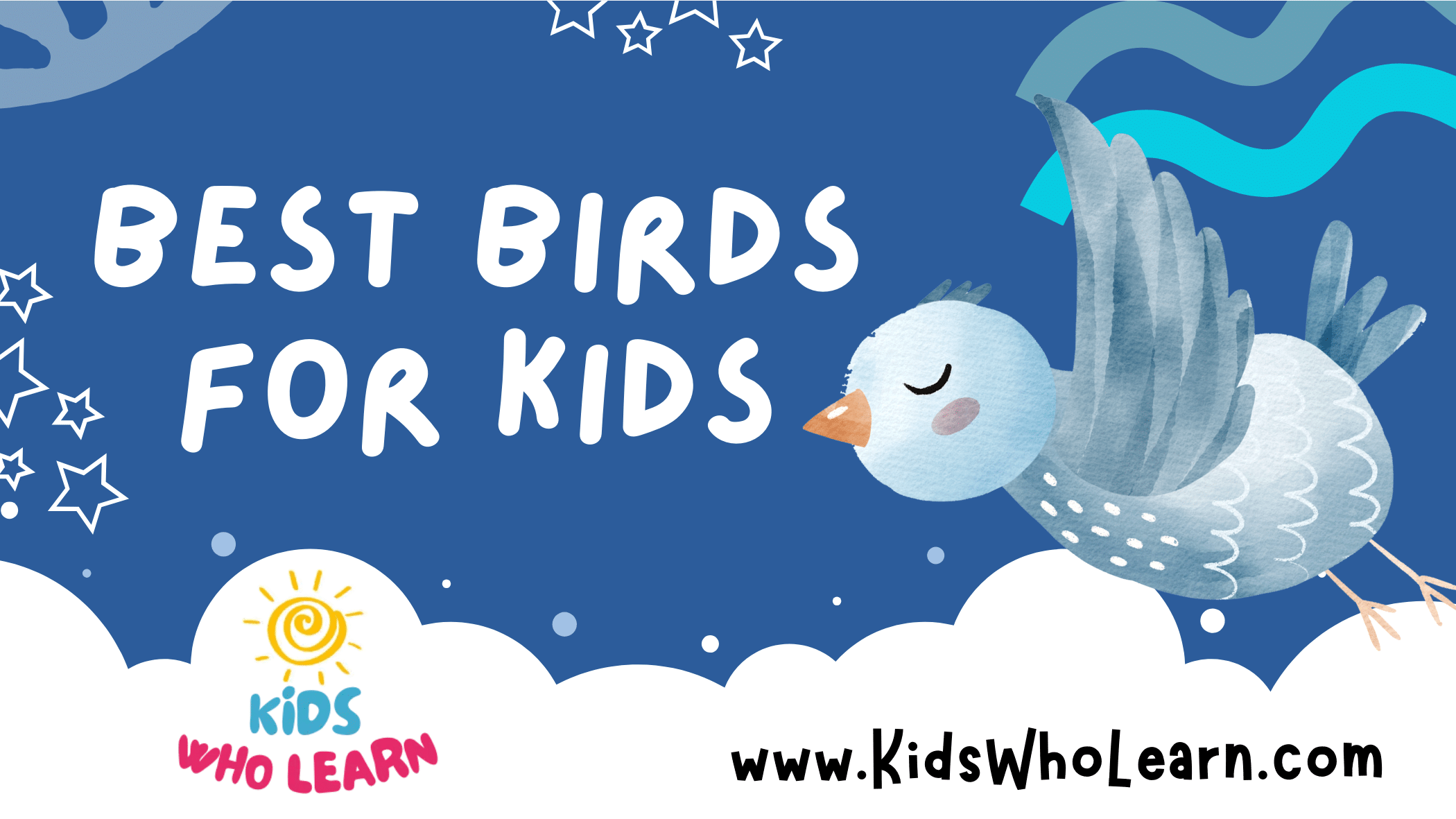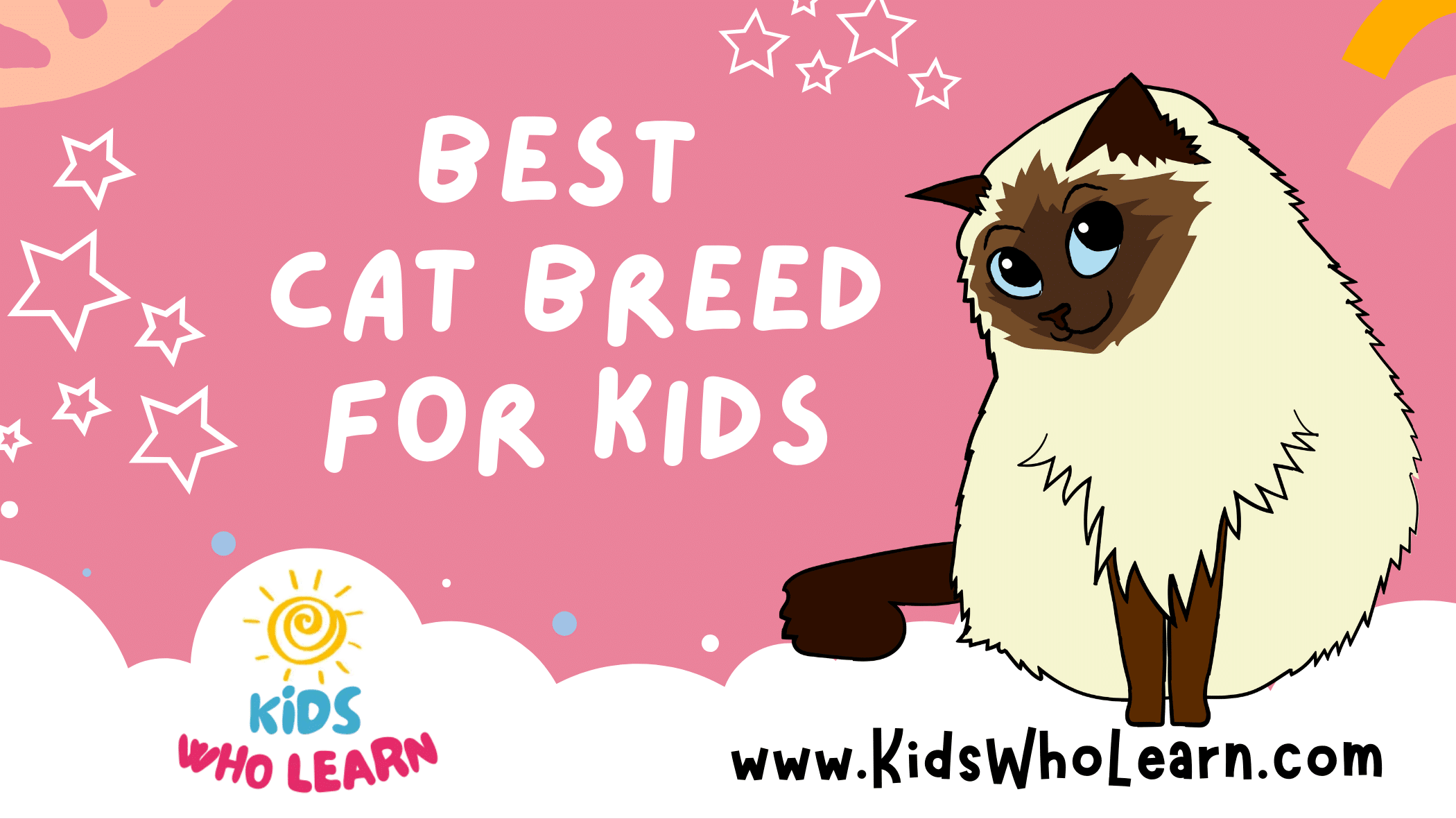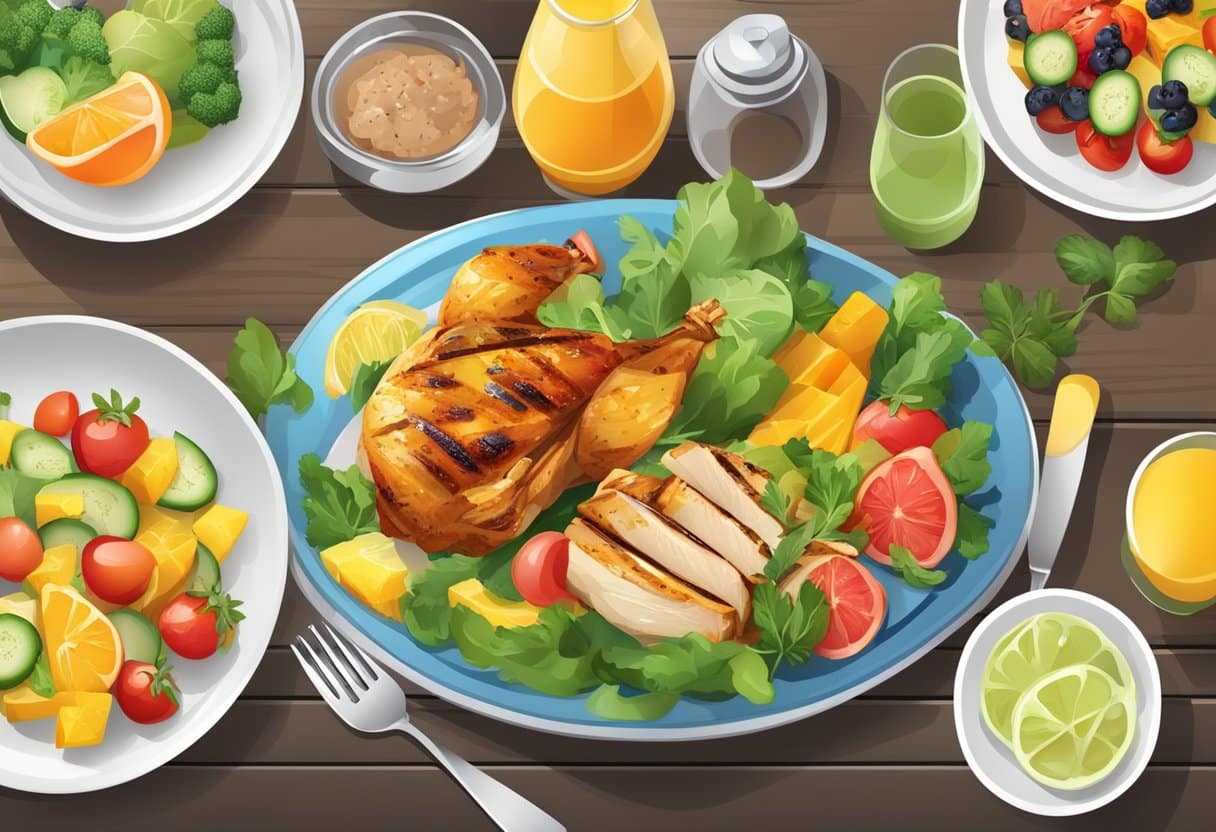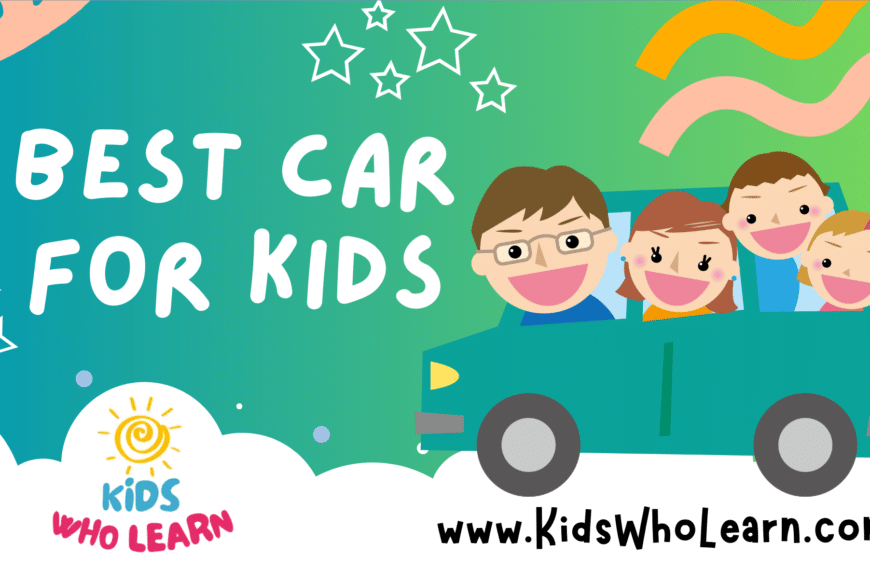Choosing the right pet can be a delightful yet complex decision for parents looking to enrich their children’s lives. Birds, with their vivid plumage and engaging behaviors, offer a unique opportunity for kids to learn about responsibility, empathy, and the joys of caring for another living being. When selecting a bird as a family pet, it’s essential to consider the child’s age, the bird’s lifespan, and the level of care required to ensure a harmonious relationship between your child and their feathered friend.
Understanding the needs of both the child and the bird is crucial in creating a nurturing environment for both. Birds can provide companionship and entertainment, but they also require a dedicated space in your home and regular interaction to remain happy and healthy. Knowledge about diet, habitat, social needs, and appropriate handling is important for the well-being of the bird and to ensure a safe and enjoyable experience for children.
Key Takeaways
- Birds can teach children about responsibility and empathy.
- Selecting a bird requires considering the child’s age and the bird’s care needs.
- Proper care and interaction are vital for the bird’s health and child’s safety.
Benefits of Having Birds as Pets for Children
When you bring a pet bird into your home, you’re offering your children a unique opportunity to learn valuable life skills and grow emotionally. The companionship of a bird can enrich your child’s life in multiple ways.
Teaching Responsibility and Care
Learning to Provide for a Living Being
By caring for a pet bird, children learn the importance of routine and consistency. Feeding, cleaning cages, and providing fresh water daily, helps children understand the dedication required to care for another life. Through these activities, they gain a sense of accomplishment and pride.
- Feeding: Ensure your child knows the bird’s diet and feeding schedule.
- Cage Cleaning: Teach your children how to maintain a clean habitat for their feathered friend.
Integrating these tasks into their daily lives encourages a routine that fosters responsibility.
Health and Hygiene Awareness
Interacting with birds also teaches children about the importance of cleanliness to prevent the spread of disease both for the birds and the family, instilling good hygiene practices from a young age.
- Hand Washing: Always wash your hands before and after handling your bird or its cage.
- Regular Check-ups: Teach your child the importance of routine vet visits to keep the bird healthy.
Emotional and Social Development
Developing Empathy and Understanding
Pet birds often form strong bonds with their owners, providing affection that can be both soothing and fulfilling. Observing and interpreting a bird’s needs and behavior helps children develop empathy and emotional intelligence.
- Observe: Watch for signs of contentment or distress in your pet bird.
- Respond: Encourage children to respond to the bird’s needs with kindness and gentleness.
Birds with their often friendly and social nature can become trusted companions, offering comfort and interaction that assists with a child’s social development.
Social Interaction and Communication
Birds like parrots and budgerigars can be especially engaging due to their ability to mimic speech and sounds, providing a unique way for children to learn about communication and social interaction.
- Talk and Listen: Spend time talking with your pet bird and listening to it vocalize.
- Social Needs: Discuss how social interaction is important both for pet birds and children.
Through nurturing these feathered friends, children learn to communicate and build relationships, addressing both the social needs of the bird and the child.
Selecting the Right Bird Species
When choosing a bird for your child, consider factors such as the bird’s lifespan, the child’s age, and your family’s lifestyle to ensure a suitable match.
Age-Appropriate Bird Choices
For younger children, stick to gentle and friendly bird species. Bantam chickens are a commendable choice as they are not only kid-friendly but also can live comfortably in a backyard setting.
- Budgerigars (Budgies): Ideal for school-aged children, they are small, intelligent, and can be hand-trained.
- Cockatiels: These birds are known for their affectionate nature, which is perfect for slightly older children who can handle pets with care.
Temperament and Noise Levels
Consider the bird’s temperament and noise level as these will impact your daily life.
- Canaries and Finches: They are relatively quiet, suitable for a peaceful home environment.
- Parrots: Larger species like macaws are very loud and might not be the best fit if you prefer a quieter bird. Smaller parrots like lovebirds could be a more manageable option, as they are less noisy.
Space and Habitat Requirements
Your home must accommodate the bird’s cage and habitat needs comfortably.
- Small Birds (e.g., Budgies, Canaries): Require a cage that is at least 18x18x24 inches.
- Larger Birds (e.g., Cockatiels): Need a larger space, with cages starting from 24x24x24 inches.
- Ensure there is adequate space around the cage for flight and exercise.
Understanding Bird Care Basics
Caring for pet birds requires a solid understanding of their dietary needs, cage upkeep, and overall health and safety. Ensuring that these areas are properly managed will lead to a happier, healthier pet bird.
Feeding and Nutrition
Your pet bird’s health is greatly influenced by their diet, which should be balanced and specific to their species. A well-rounded diet typically includes:
- Seeds and Pellets: Form the base of most pet bird diets, but should be species-appropriate.
- Fruits and Vegetables: Offer a variety of fresh options daily to provide necessary vitamins and minerals.
- Water: Always provide clean, fresh water for your bird.
Avoid foods like avocado, chocolate, and caffeine, as these can be toxic to birds.
Cage Cleaning and Maintenance
Regular cage cleaning is critical for your bird’s health and wellness. A clean habitat prevents the spread of disease and keeps your bird comfortable. Here are key tasks:
- Daily: Remove food waste and wipe down surfaces.
- Weekly: Wash and disinfect all perches and toys.
- Monthly: Do a thorough cage cleaning, including replacing the substrate or paper lining.
Bird Health and Safety
To ensure your bird’s safety and good health:
- Rest: Provide a quiet environment for your bird to get 10-12 hours of sleep each night.
- Check-ups: Schedule regular vet check-ups to monitor health and catch issues early.
- Environment: Keep the cage away from hazards like open windows, toxic fumes, and unsupervised pets.
By staying vigilant about these aspects of bird care, you’ll create a secure environment that promotes well-being for your feathered friend.
Popular Bird Types for Kids
When choosing a bird for your child, consider temperament, care needs, and the bird’s social nature. Smaller birds are often better for beginners and busy families due to their manageable size and maintenance.
Finches and Canaries
Finches and canaries are small birds with vibrant colors and pleasant songs, making them suitable for kids. These birds are generally easier to care for but prefer not to be handled, which could be ideal if your child enjoys watching birds over direct interaction. Finches do well in pairs or small groups.
- Colors: Varied, from bright yellows to deep reds.
- Care: Low; social but not hands-on.
Budgies and Parakeets
Budgies, or parakeets, are one of the best pet birds for kids due to their playful nature and ability to learn tricks. They boast a variety of feather patterns and colors, and with proper socialization, they can become quite affectionate.
- Interaction: High; enjoys human companionship.
- Learning: Can learn to mimic words and sounds.
Cockatiels and Lovebirds
Cockatiels are gentle and affectionate, often bonding closely with their owners. Their crested feathers and ability to whistle tunes are appealing to children. Lovebirds are small, active, and colorful, and while they can be nippy, with proper handling, they make delightful pets.
- Cockatiels: Sociable; requires attention.
- Lovebirds: Best in pairs; vibrant colors.
Doves and Pigeons
Doves and pigeons are larger birds, known for their calm demeanor. They have soft feathers and soothing coos that can be comforting. These birds are sturdy and can form strong bonds with their handlers.
- Handling: Gentle; enjoys petting.
- Maintenance: Moderate; larger cage needed.
Other Friendly Bird Species
There are other bird species also suitable for children, such as quails or certain types of softbills. These species often have unique feathers and are known for being personable. When choosing a bird, it’s important to research its specific care requirements and temperament.
- Consider: Lifespan, space required, diet.
- Note: Always supervise interactions between children and pets.
Creating a Kid-Friendly Bird Environment
A kid-friendly bird environment balances safety and stimulation. Your focus should be on selecting the right cage and providing appropriate accessories and enrichment for both the birds and the kids who will interact with them.
Choosing the Right Cage
When selecting a cage for pet birds in a kid-friendly environment, size and security are paramount. It should be spacious enough to allow the birds to fly short distances, climb, and play. A cage with dimensions of at least 24″x24″x24″ is recommended for small to medium-sized birds.
Materials: Choose cages with non-toxic, lead-free paint to prevent any risk of poisoning, as birds often nibble on their enclosures.
Bar Spacing: Opt for a cage with bar spacing no wider than 1/2 inch to keep small birds safely inside and children’s fingers outside.
Locks: Secure locks are crucial to prevent escape and to keep curious children from accidentally opening the cage.
Accessories and Enrichment
To create a stimulating environment for birds that’s also safe for kids, incorporate various accessories:
- Feeders: Position feeders at a height easily reachable by kids for convenient feeding. Ensure they’re securely attached to prevent spillage.
- Hanging Toys: Offer a variety of hanging toys to engage the birds. Select toys made from safe, chewable materials with no small parts that could be a choking hazard.
- Colors and Photos: Bright colors appeal to both children and birds. You can hang pictures or photos around the cage to pique curiosity and create a visually stimulating space.
- Air Quality: Maintain good air quality with regular cage cleaning and consider an air purifier to remove dander and dust for the safety and comfort of both birds and kids.
Regular interaction with well-chosen, safe accessories not only keeps the pet birds active and healthy but also fosters a positive relationship between the birds and the children in your care.
Interaction and Bonding
Bonding with a pet bird can be a delightful experience for kids, fostering a gentle and friendly companionship. Successful interaction heavily relies on proper handling and engaging activities that nurture the relationship between the child and the bird.
Handling and Socializing
To ensure a strong bond, it’s essential to regularly handle your bird in a gentle manner. Begin by allowing the bird to become accustomed to your presence, gradually introducing your hand into the cage and offering treats. Use the following list as a guideline for safe handling:
- Use slow and calm movements to avoid startling the bird.
- Encourage the bird to step onto your hand with a command, like “step-up”.
- Always supervise interactions between children and birds to ensure they remain gentle and that the bird is comfortable.
- Praise the bird with a soft voice and treats when it responds positively to handling.
Building trust takes time, and it’s important to be patient and consistent during socialization sessions.
Activities and Playtime
Playtime is pivotal for strengthening the bond between kids and their feathered friends. Incorporate a variety of activities that both the bird and the child will enjoy:
- Interactive toys: Use toys that promote problem-solving and mimic foraging behaviors.
- Teach tricks: Simple tricks, such as waving or fetching, can be rewarding and help in forming a connection.
- Photo sessions: Taking photos together can be a fun way for kids to show pride in their bird and share memories.
- Outdoor playtime: Ensure safety with a harness or in an enclosed space to enjoy the outdoors.
Remember that each bird has individual preferences, so it’s crucial to observe and learn what your bird enjoys most. Activities should be age-appropriate for the child and safe for the bird.
Health Considerations for Children and Birds
When introducing birds into a home with children, it’s crucial to consider health aspects such as potential allergies and ensuring a hygienic environment for both the child and the pet bird.
Allergies and Air Quality
Birds can carry allergens in their feathers and dander which may aggravate asthma or cause allergic reactions in some individuals. Air quality in your home can be affected by the dust and mites that are often associated with birds.
- Assess Sensitivities: Before choosing a bird, have your child tested for allergies to bird-specific allergens.
- Air Filtration Systems: Using HEPA air filters can help maintain clean air and reduce the presence of airborne dust and potential allergens.
- Regular Cleaning: Clean the bird’s cage, accessories, and surrounding areas regularly to minimize dander and dust.
Hygiene and Disease Prevention
Maintaining hygiene is critical in preventing the transmission of diseases from birds to humans, especially for children who may be more sensitive to infections.
- Hand Washing: Teach your child to wash hands thoroughly with soap after handling the bird or the bird’s equipment.
- Safe Interaction: Educate your child on safely interacting with the bird to avoid bites or scratches.
- Regular Check-Ups: Schedule routine health check-ups for the bird to ensure it stays healthy and to reduce the risk of disease transmission.
By considering these health factors, you can create a safer environment for both your child and your feathered friend.
Long-Term Commitment and Care
Choosing a bird as a pet for your child necessitates understanding the long-term commitment and the implications of a bird’s lifespan on future care and planning.
Understanding Lifespan Challenges
Birds can live for several decades, with some species living upwards of 50 years. You must be ready to commit to this potential longevity. For example:
| Species | Average Lifespan |
|---|---|
| Budgerigar | 5-10 years |
| Cockatiel | 10-15 years |
| African Grey Parrot | 40-60 years |
| Macaw | 50+ years |
These figures mean that a pet bird can remain with your family for a significant portion of your child’s life, quite possibly into their adult years. It’s important to discuss lifespan and commitment thoroughly before bringing a bird into your home.
Maturity and Future Planning
As children grow, their interests and living situations can change. What happens to the bird when your child goes to college or moves out?
- Maturity: Your child’s level of maturity is crucial in teaching them the responsibilities involved in caring for a bird, both now and as they get older.
- Future Planning: Plan for who will take care of the bird if your child can no longer do so. Set up a support system, perhaps involving friends or family who are willing and able to help.
Ensure that when selecting a bird, you consider these commitments very seriously, as the well-being of the bird and the satisfaction of your child are paramount.
Resources for Further Learning
Once you’ve decided to introduce your child to the world of birds, it’s important to access the right educational materials and community support. This ensures a safe and enriching experience for both you and your child.
Educational Materials
National Geographic Kids: A treasure trove of bird-related information well-suited for children. Features include:
- Bird Species Profiles: Detailed descriptions of various birds, their habitats, and behaviors.
- Fun Facts: Engaging trivia that can spark a child’s interest in birdwatching and conservation.
Books and Guides:
- The Young Birder’s Guide to Birds of North America: A book tailored for young readers.
- Peterson Field Guides for Young Naturalists: Simplified field guides to help kids identify and learn about birds.
Community and Support Groups
Online Forums and Groups:
- Local Birdwatching Societies: Connect with local experts and enthusiasts who often host family-friendly outings.
- BirdSpotter’s Forum: An online community for sharing experiences and advice on bird care and appreciation.
Events:
- Wacky Weekend at Zoos and Aviaries: Many institutions host special educational events to engage children with wildlife.
- Monthly Meet-ups: Local bird clubs may offer regular meet-ups where families can learn from experienced birders.
Frequently Asked Questions
When selecting a bird for children, you should consider species known for their quiet nature, size suitable for young handlers, and minimal care requirements.
What species of birds are known for being quiet and suitable for children?
Budgerigars and finches are among the quietest bird species, making them ideal for households with children. Their gentle chirping is less likely to be disruptive.
What traits make a bird an ideal choice for a child’s first pet?
A bird that is sociable, gentle, and tolerant of handling is an excellent choice for a child’s first pet. Small size and a calm demeanor are additional important traits.
Are there small bird species that are recommended for young families?
Canaries and parakeets are small bird species well-suited for young families because they require less space and can be easier to manage.
Which birds have the ability to mimic speech and are also safe for kids?
Cockatiels and budgerigars are capable of mimicking speech without being as large or demanding as some other parrots, making them safe and enjoyable for children.
How can one identify a bird that is easy to care for by a child?
A bird that is easy to care for will have a diet that’s simple to provide, low-maintenance grooming needs, and a demeanor that’s calm and adaptable to routine.
What are some considerations when looking for a cage-free bird companion for a child?
For a cage-free bird companion, consider a well-trained, social bird that does not require constant confinement, such as certain domesticated dove species. Ensure your home is safe and escape-proof.













